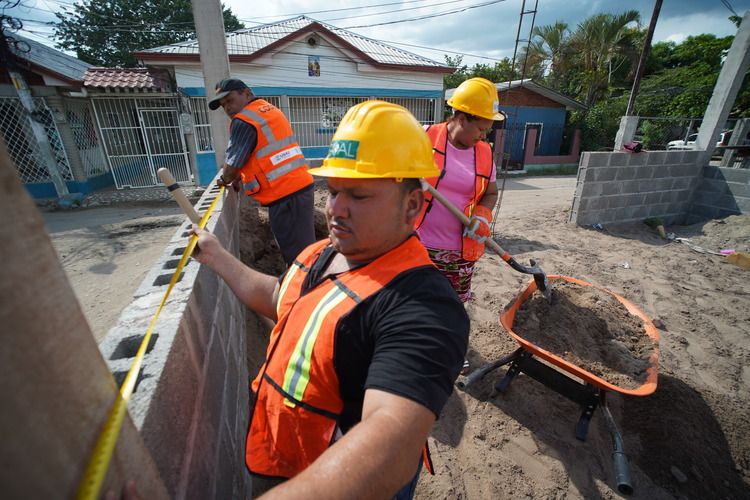 Stories
Stories
January 16, 2024 • 3 min read
In 2020, Honduras was struck by two deadly and destructive hurricanes within two weeks of each other. Eta, a category 4 hurricane with winds of 240 kilometres per hour and rains that caused severe flooding and landslides, affected the poorest communities in vulnerable, at-risk areas.
Neighbourhoods at Risk
Thirteen days later, while the country was trying to recover from the devastation of Eta, Hurricane Iota struck Honduras. A category 5 hurricane, with winds of up to 260 kmph, caused even more damage to the already devastated communities. In total, over 3 million people were estimated to have been affected by the hurricanes.
The city of El Progreso in Northern Honduras was heavily affected by the disaster. The city is located in a region of Honduras that is highly vulnerable to climate change. Many communities and neighbourhoods in El Progreso are informal urban settlements,. Families live in makeshift homes that offer little protection against the elements.
In 2022, Honduras was struck by another storm – this time, a category 1 hurricane known as Hurricane Julia. Neighbourhood 2 de Julio in El Progreso, which is located on the banks of the Ulua River (one of the country’s most powerful rivers), experienced severe flooding that profoundly impacted the local community.
Joining Forces for Change
Oscar Lezama has lived in the 2 de Julio neighbourhood for 38 years. In the aftermath of the hurricanes, Oscar took part in the cleanup efforts, placing sandbags on the riverbanks to protect residents from further flooding.
Today, he is a member of the 2 de Julio neighbourhood board and is president of the PEC (Community Executed Projects) committee, which receives support under GOAL’s Barrio Resiliente (Resilient Neighbourhoods) project. The committee manages community development initiatives and projects with the aim of improving the living conditions of residents.
“In the past, aid was sought through the neighbourhood board. We would make requests, but it was difficult to obtain anything. Now, with the PEC training, we have learned to manage and request what we need for our community in a clear manner,” Oscar explains.

The 2 de Julio Neighbourhood PEC (Community Executed Projects) Committee
The Barrio Resiliente Project
Barrio Resiliente, or the Resilient Neighbourhoods project, implemented by GOAL, aims to increase the resilience of vulnerable communities in the Sula Valley. This is achieved by building emergency preparedness and risk reduction infrastructure in vulnerable neighbourhoods to strengthen their capacity during disasters, including storms, landslides, floods, and instances of heavy rain.
It also seeks to promote a culture of collaboration, risk prevention, and social cohesion in these communities to ensure that residents work collaboratively and proactively to prepare for and mitigate these emergencies before they happen.
Building Resilient Communities
Currently, the committee is working on the construction of a community centre in 2 de Julio. Thanks to the PEC training they received from GOAL, the committee successfully garnered support from the El Progreso municipality, which assisted with the project’s design and provided construction materials.
“Thanks to God, we were able to submit a successful request to the Municipality, and they supported us with the design. They also provided us with construction materials such as cement, iron, and gutters.”
The PEC training also included guidance on how to carry out community development projects in an organised, documented, and transparent manner. This has allowed the committee to provide clear progress reports to the community and ensure that everybody is involved in the process.
The PEC committee in 2 de Julio also collaborated with three other PEC committees in neighbouring Fátima, San Martín, and Centroamericana. The community centre will be a shared space for multiple communities, bringing people together in times of peace and serving as temporary accommodation for displaced families in times of crisis.

Oscar and the 2 de Julio PEC Committee building the community centre.
The committee also improves storm water management systems, installs signs to indicate evacuation routes, and supports other home and business improvement projects. The PEC has successfully organised members of the community, who now work together voluntarily to strengthen the neighbourhood. One of the most crucial disaster risk reduction measures, the storm water improvement project, has been completed in record time.
“The Resilient Neighbourhood Project has brought the community together in a way that has never been seen before,” Oscar adds. “This is a commitment to improving the community, so we all get involved, including the youth as the main strength,” says Oscar.
